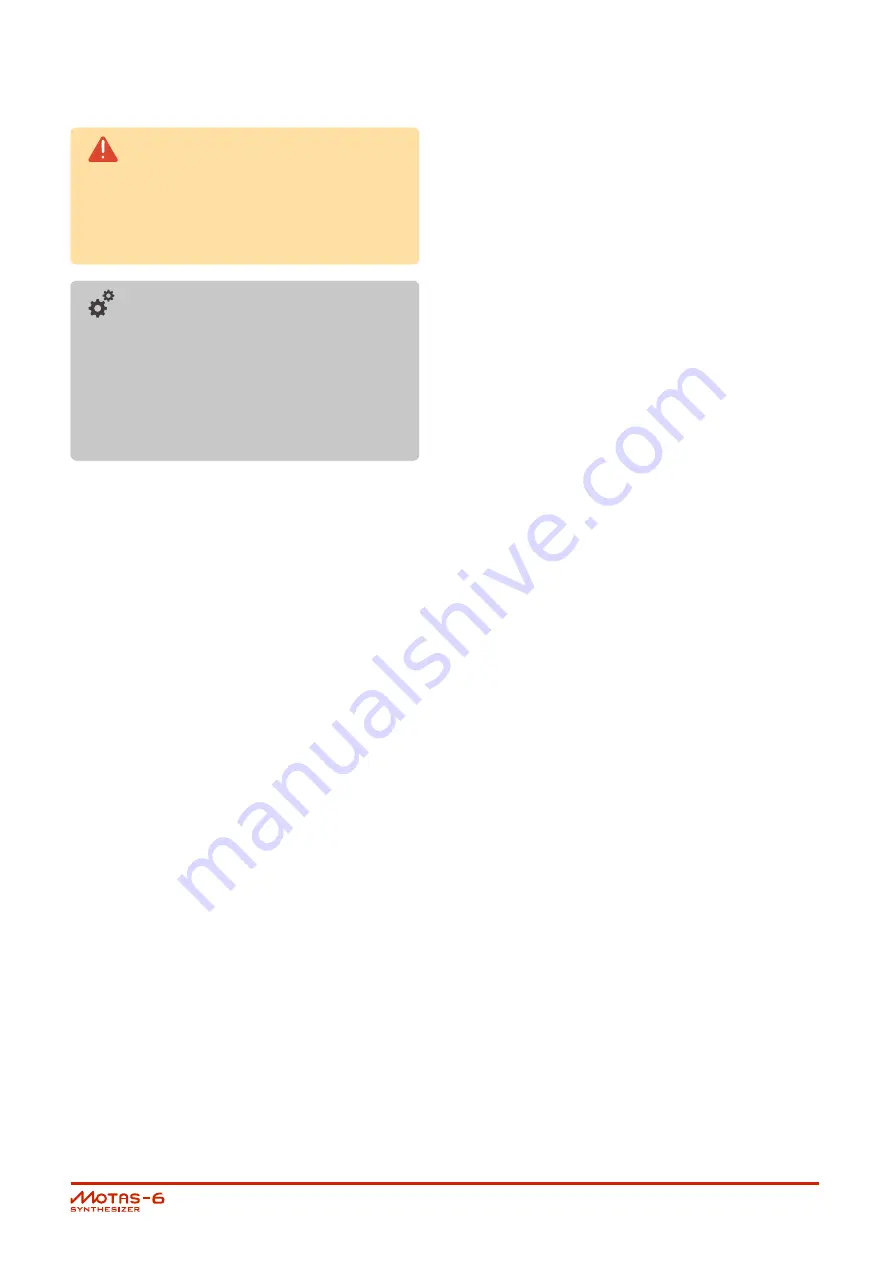
[WARNING!] When using the internal feed-
back be careful as self-oscillation can occur (when
the gain around the loop from the mixer, through
the filters and to the output and back in again is
too high) – so be careful of your speakers/hearing!
[ADVANCED-INFO] The phase of the inter-
nal feedback signal is in-phase with the oscillator
outputs. This means that you can increase the
bass-end of the signal using the feedback feature
even when the low pass filters are set at high res-
onance (which would normally attenuate the bass-
end).
MIXER
[KNOB-LEVEL]
This parameter page sets the total level of the outputs of
oscillators 1, 2 and 3 together with the noise and external
input signals.
Mixer options
View and edit the additional options by pressing
[BUTTON-LEFT]
or
[BUTTON-RIGHT]
when the active item is the
basic offset.
NORMAL
normal gain.
BOOST
gain boost. Extra gain is applied
before the audio signal
reaches the filter stages. This can
be useful to overdrive the filters to
create a harsher sound.
10.6 Low-pass filter 1
A key part in subtractive synthesis is the use of filters to
shape the harmonic content to give a rich variety of sounds.
This filter is a very powerful low-pass filter with up to 6-
pole roll-off (-36 dB per octave). It has adjustable reso-
nance (or feedback) amount, with three options for the
source of the feedback. The output can be tapped off from
any of the poles (from zero to the 6th pole).
LPF-1FREQ
[KNOB-LOW-PASS FILTER 1 FREQUENCY]
The cut-off frequency is controlled with this parameter page.
The lower the setting the more filtering will be applied
to the input signal. At higher settings more of the input
harmonics are pased through with corresponding brighter
sound.
LPF-1 input options
This parameter page also allows control of which audio
signal is input to the filter.
View and edit the additional options by pressing
[BUTTON-LEFT]
or
[BUTTON-RIGHT]
when the active item is the
basic offset.
MIX
MIX the main mix (normal setting).
LPF2
LPF2 low-pass filter 2.
HPF
HPF the high-pass filter.
NOISE
NOISE the noise source.
PULS1
PULSE 1 pulse
waveform from oscillator 1.
SAW2
SAWTOOTH 2 sawtooth
waveform from oscillator 2.
TRI3
TRIANGLE 3 triangle
waveform from oscillator 3.
SUB2
SUB 2 sub-square
waveform from oscillator 2.
LPF-1RESONANCE
[KNOB-RESONANCE]
Resonance amount is controlled from this parameter page.
A portion of the output of the filter is fed-back to the in-
put causing a resonance peak in the output at high levels,
changing the characteristic of the sound passing through
the filter. At very high settings the filter may self-oscillate
and make noise even without any input signal.
LPF-1 resonance source
View and edit the additional options by pressing
[BUTTON-LEFT]
or
[BUTTON-RIGHT]
when the active item is the
basic offset.
The analogue signal from where the feedback signal is routed
can be chosen from the following 3 options:
POLE-4
pole-4 output
(-24 dB roll-off per octave).
POLE-6
pole-6 output
(-36 dB roll-off per octave).
HPF
high-pass filter output.
Each of these sound different - the 4-pole output gives a
higher resonant frequency (for the same filter cut-off fre-
quency) and tends to attenuate the signals below the res-
onance frequency more than the 6-pole setting.
User Guide v1.31 [FOR SCREENREADERS]
page 29
Summary of Contents for Motas-6
Page 2: ......












































